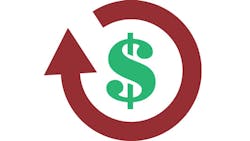The Global Manufacturer: Will the Next Economy Be Circular?
When I visited Thermo Fisher Scientific's Asheville, N.C. plant a few months ago to confirm them as an IndustryWeek Best Plant, one of the projects they were working on was to become a zero landfill plant. When the plant established the goal in 2010, it was sending 30 tons per month to the landfill. Now they're down to 5 tons or less a month.
"We needed to do it with no net cost increase," said Phil McLellan, former director of operations at the plant. "We focused on reducing, reusing and recycling to the point where hopefully we could generate enough productivity improvements to pay for any costs."
See Also: Global Manufacturing Economy Trends & Analysis
That's a critical point as manufacturers live in a highly competitive world where you make a profit or you go away. But just how much profit might be left on the table from better use of resources received a startling examination at the recent World Economic Forum in Davos, Switzerland. There, attendees were briefed on what will become an increasingly important concept -- the circular economy.| Learn which manufacturers are early adopters for the circular economy at iw.com/circular-economy. |
What's at stake in establishing a circular economy? WEF says the four to five initial projects could net $500 million and create 100,000 jobs as well as eliminate or productively use 100 million tons of waste within five years. With broader adoption, says MacArthur, materials cost savings could exceed $1 trillion by 2025, net the materials costs incurred during reverse-cycle activities.
About the Author
Steve Minter
Steve Minter, Executive Editor
Focus: Leadership, Global Economy, Energy
Call: 216-931-9281
Follow on Twitter: @SgMinterIW
An award-winning editor, Executive Editor Steve Minter covers leadership, global economic and trade issues and energy, tackling subject matter ranging from CEO profiles and leadership theories to economic trends and energy policy. As well, he supervises content development for editorial products including the magazine, IndustryWeek.com, research and information products, and conferences.
Before joining the IW staff, Steve was publisher and editorial director of Penton Media’s EHS Today, where he was instrumental in the development of the Champions of Safety and America’s Safest Companies recognition programs.
Steve received his B.A. in English from Oberlin College. He is married and has two adult children.

